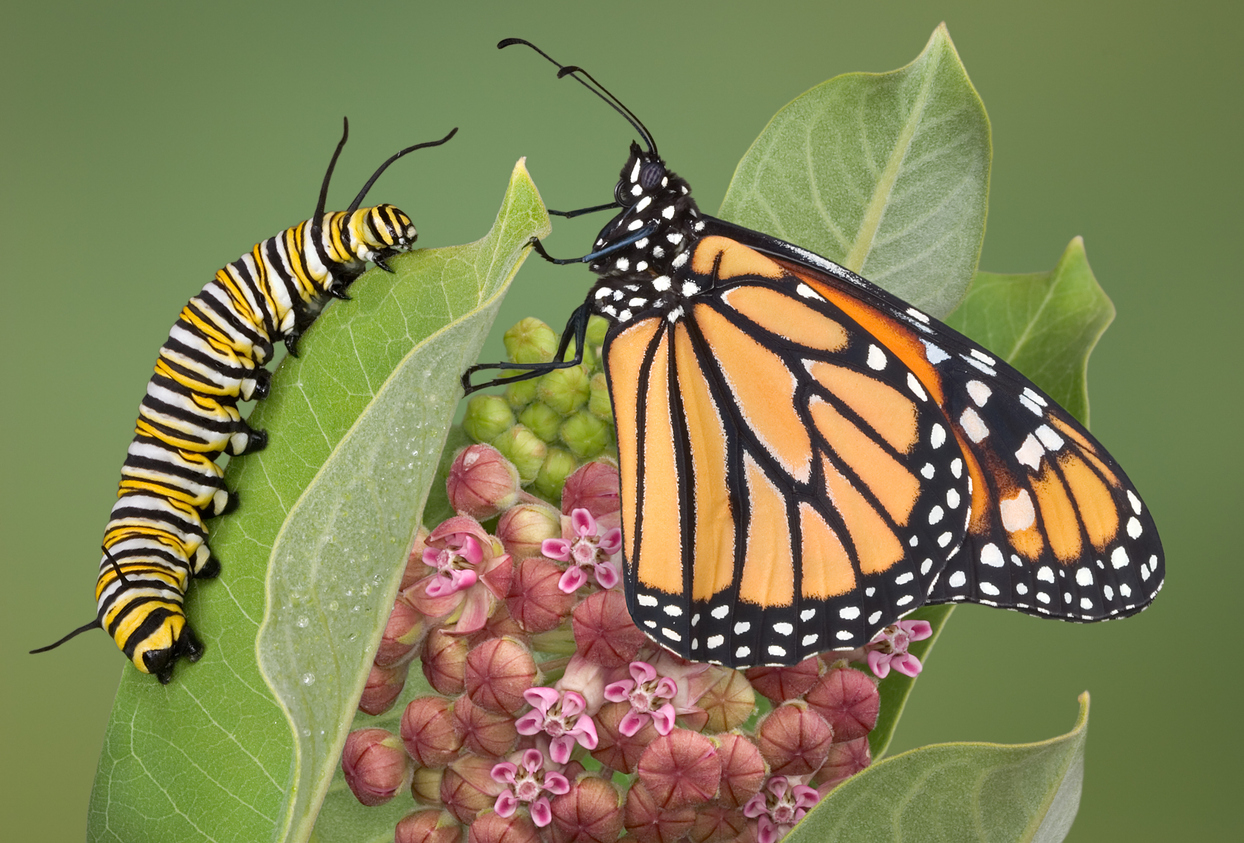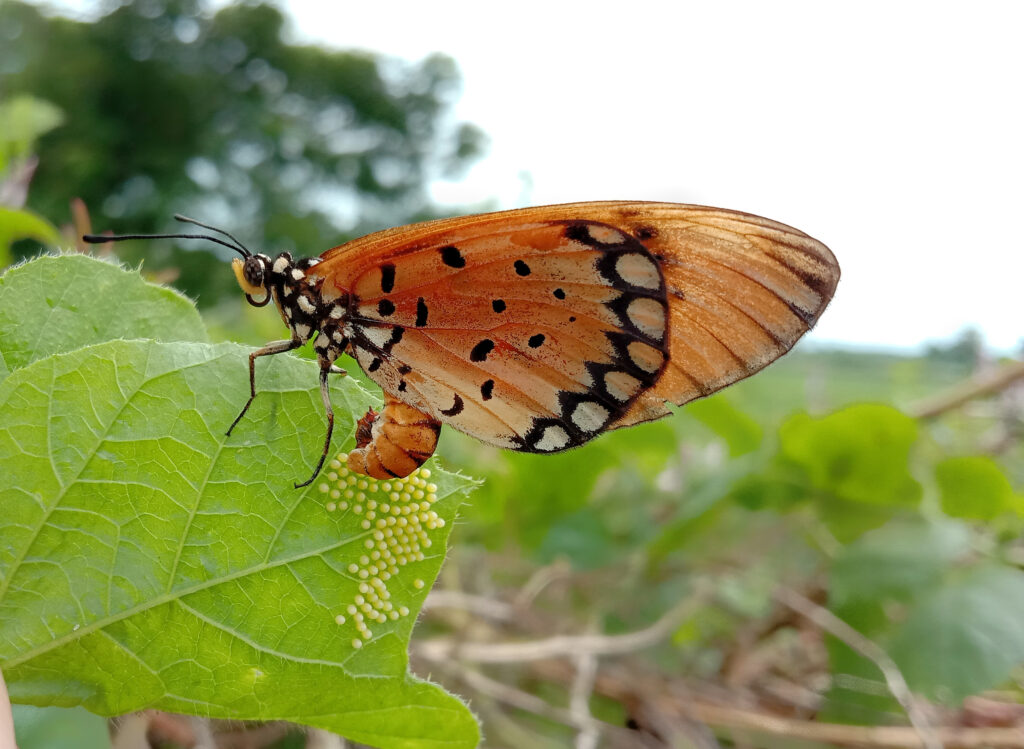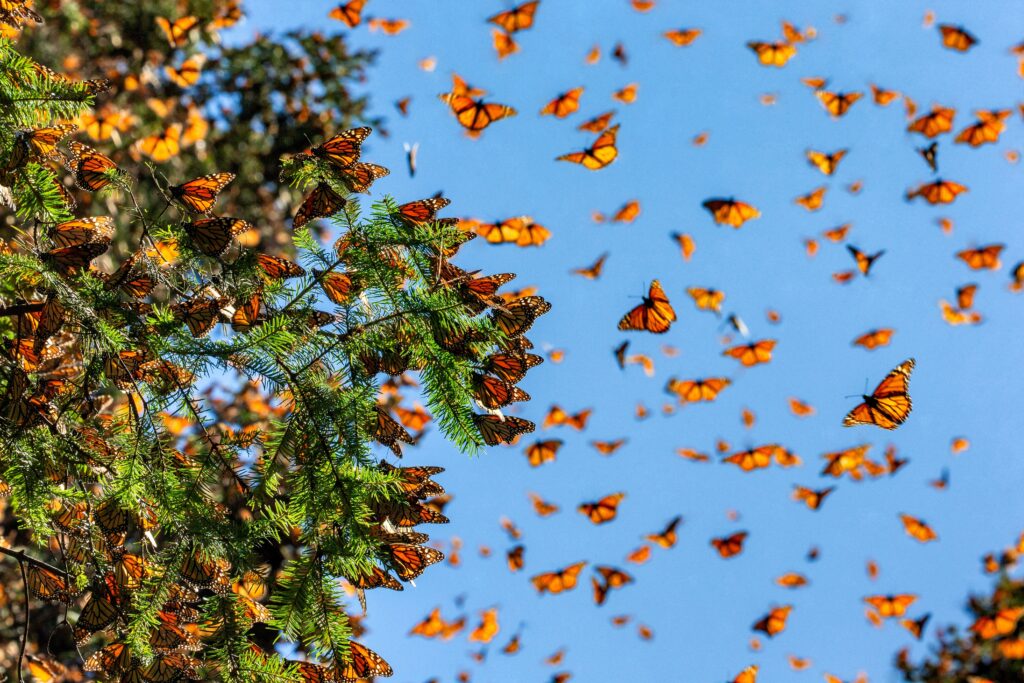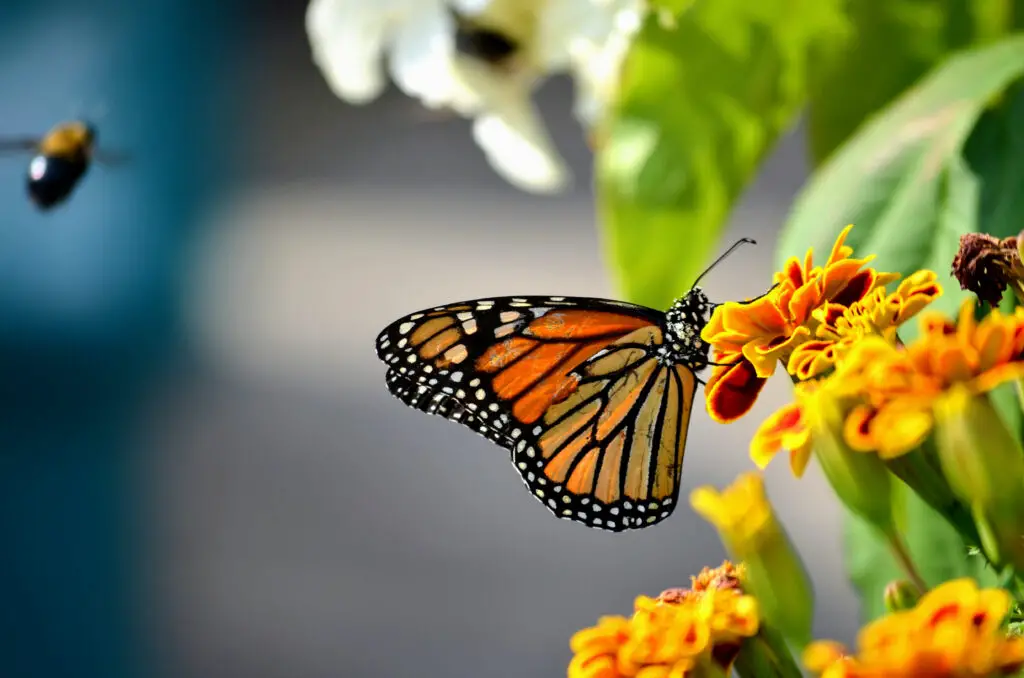Few creatures capture the imagination like the Monarch Butterfly. With their vibrant orange wings, awe-inspiring migrations, and deep cultural symbolism, Monarchs are more than just insects—they’re vital to ecosystems and cherished around the world. Yet, in 2025, this iconic species officially joined the endangered species list, marking a grim milestone in biodiversity loss. From their miraculous life cycle to their spiritual significance, here’s everything you need to know about Monarch Butterflies—their wonders, their struggles, and the steps we must take to save them.
1. A Miraculous Life Cycle: From Egg to Butterfly

iStock: CathyKeifer
The Monarch’s journey begins as a tiny, pearl-shaped egg laid delicately on a milkweed leaf. After 4-6 days, the egg hatches into a striped caterpillar that devours its eggshell before feasting on milkweed. Over the next two weeks, the caterpillar grows 2,000 times its original size, shedding its skin five times. It then forms a chrysalis, a jade-green cocoon flecked with gold, where its body liquefies and transforms. After 10-14 days, an adult butterfly emerges, pumping blood into its soft wings until they harden. This newly minted Monarch is ready to fly and begin the next stage of its incredible life.
Interesting Fact: Only 1 in 100 Monarch eggs survive to adulthood due to predators, disease, and habitat destruction.
2. What’s in a Name? The Origins of “Monarch”

The Monarch Butterfly was named for King William III of England, also known as William of Orange. Early settlers in North America were captivated by the butterfly’s bold orange-and-black wings, reminiscent of royal robes, and named it after the monarch. Its scientific name, Danaus plexippus, has Greek roots, referencing Danaus, a mythical king whose daughters symbolize transformation and escape. This elegant naming perfectly reflects the butterfly’s remarkable journey, from humble caterpillar to regal beauty, and its endurance through countless generations.
Interesting Fact: Monarchs are also called “Milkweed Butterflies” because their entire lifecycle depends on this single plant.
3. The Life of a Monarch: Lifespan, Love, and Legacy

Most Monarch Butterflies live only 2-6 weeks, just long enough to mate and lay eggs. However, the “super generation,” born in late summer, lives up to 8 months—a unique adaptation that allows them to complete their migration to Mexico. Monarchs mate mid-flight, with males using specialized claspers to secure females. Afterward, females lay up to 400 eggs on milkweed plants, ensuring the next generation continues the journey. This incredible reproductive cycle sustains their population, even as their numbers face devastating declines.
Interesting Fact: Monarchs weigh less than a paperclip but can travel thousands of miles in their short lives.
4. Cultural Reverence: Aztec Legends and Día de los Muertos

Monarch Butterflies hold profound spiritual meaning in many cultures. The Aztecs believed they carried the souls of warriors who died in battle, their flight symbolizing eternal transformation. Today, Monarchs are celebrated in Mexico during Día de los Muertos (Day of the Dead) as messengers returning the souls of loved ones to Earth. Their annual arrival in early November aligns perfectly with this sacred celebration, making them a cherished symbol of transformation, renewal, and eternal life.
Interesting Fact: Monarchs cluster in oyamel fir forests during Día de los Muertos, creating breathtaking natural displays seen as a spiritual homecoming.
5. Relatives Already Lost: Monarchs at the Edge

The Monarch Butterfly’s lineage includes species like the Xerces Blue Butterfly, which went extinct in the 1940s due to habitat destruction. Monarchs now face a similar trajectory, threatened by urbanization, pesticide use, and climate change. These losses highlight the fragility of butterfly species and the cascading effects of biodiversity decline. Without intervention, the Monarch’s fate could mirror that of its lost relatives, signaling an ecological crisis with far-reaching consequences.
Interesting Fact: The Xerces Society, named after the extinct Xerces Blue Butterfly, works tirelessly to protect pollinators like the Monarch.
6. Why Monarchs Are Endangered: Human-Driven Threats

Urbanization, industrial farming, and pesticide use have devastated Monarch habitats. Herbicides like glyphosate have wiped out over 80% of milkweed, the only plant Monarchs rely on for breeding and feeding. Urban sprawl has further fragmented migration corridors, making their long journey even more perilous. With milkweed in decline and nectar sources disappearing, Monarchs face an uphill battle for survival.
Interesting Fact: Western Monarch populations have dropped by 99%, with fewer than 2,000 recorded along the Pacific Coast.
7. Why Monarchs Are Endangered: Natural Threats

In addition to habitat loss, Monarchs face predators like birds, wasps, and ants that target their eggs and larvae. Climate change disrupts their migration patterns, leading to mismatches between their travel schedule and the availability of food or resting spots. Extreme weather events, such as storms and droughts, pose further threats, reducing survival rates for already fragile populations.
Interesting Fact: Monarch caterpillars absorb toxins from milkweed, making them poisonous to most predators.
8. Migration Miracles: A Relay Across Generations

Monarchs undertake one of nature’s greatest feats: a migration spanning up to 3,000 miles. This journey, completed over four generations, begins in Canada and ends in Mexico, where the “super generation” survives the winter in oyamel fir forests. Each butterfly flies up to 100 miles a day, guided by the Earth’s magnetic field and the position of the sun. Scientists are still unraveling how these fragile creatures navigate such vast distances, often returning to the exact trees their ancestors visited.
Interesting Fact: Monarchs can gain weight during migration by strategically feeding on nectar-rich plants.
9. Tagging Monarchs: Science on the Wings

To study their migration, scientists tag Monarchs with tiny, lightweight stickers. These tags help track their movements, identify crucial habitats, and monitor survival rates. Tagging has revealed astonishing insights, such as the longevity of the “super generation” and the pinpoint accuracy of their navigation. This research is vital for guiding conservation efforts and ensuring migration corridors remain intact.
Interesting Fact: Monarch tags are smaller than a pencil eraser and weigh less than 1/50th of the butterfly’s body weight.
10. Milkweed’s Decline: A Habitat in Crisis

Milkweed is essential for Monarchs—it’s the only plant where females lay eggs and the primary food source for caterpillars. However, widespread herbicide use and urban development have decimated milkweed populations. Roadsides and farmlands that once hosted milkweed are now barren, leaving Monarchs with fewer places to breed. Restoring milkweed habitats is critical to reversing their population decline.
Interesting Fact: Monarch Watch distributes millions of milkweed seeds annually to rebuild lost habitats across North America.
11. Actions to Save Monarchs: What You Can Do

Shutterstock
Protecting Monarchs starts with small, meaningful actions:
• Plant Native Milkweed: Create habitats where Monarchs can lay eggs.
• Avoid Pesticides: Reduce chemical use in your garden or farmland.
• Create Stopover Points: Monarch-friendly gardens in urban areas provide critical rest stops.
Interesting Fact: Monarch-friendly gardens have become a global movement, offering vital lifelines for migrating butterflies.
12. Global Conservation Efforts: The Bigger Picture

Flickr
Organizations like Monarch Watch and the Xerces Society lead large-scale efforts to protect Monarch habitats and migration corridors. These programs focus on habitat restoration, public education, and research. Governments and communities worldwide are also taking steps to support pollinators, ensuring the Monarch Butterfly has a future.
Interesting Fact: Large-scale conservation programs have restored thousands of acres of milkweed habitats.
13. Call to Action: Why Saving Monarchs Saves Us All

The Monarch Butterfly is more than a creature of beauty—it’s a symbol of resilience, transformation, and hope. Their endangered status highlights the fragility of life and the urgency of conservation. By protecting Monarchs, we protect ourselves and future generations. Their story isn’t over yet, but the time to act is now.


